Buletin Ilmiah Sarjana Teknik Elektro ISSN: 2685-9572
Implementation of GPS as a Validation System for Computer Laboratory Practicum Attendance
Anang Nur Prasetya, Supriyanto
Department of Informatics, Universitas Ahmad Dahlan, Yogyakarta, Indonesia
ARTICLE INFORMATION |
| ABSTRACT |
Article History: Submitted 15 January 2024 Revised 24 February 2024 Accepted 09 March 2024 |
| 
The attendance system is a data management system for tracking individual or institutional attendance automatically, catering to personal or organizational management needs. Its primary objective is to serve as evidence of participation in activities, particularly in educational settings, where it validates attendance during the teaching and learning process, making attendance crucial. Manual attendance-taking in the Informatics Engineering Practicum at Ahmad Dahlan University is prone to difficulties in calculation, as well as risks of torn, wet, or lost attendance sheets, leading to prolonged processing times. The development of the Reglab application aims to enhance efficiency by securely managing attendance data, replacing manual processes. Additionally, it will integrate GPS technology to validate that practical activities occur within the laboratory. The Agile methodology guides the development of Reglab, leveraging existing systems while ensuring that resources are allocated effectively to accommodate the increasing volume of student and practicum schedule data. Student data will only be utilized for practicum registration, scheduling, and attendance purposes. The Agile approach ensures that the product output meets usability and user experience standards. System evaluation involves Blackbox testing and addressing user complaints received by the laboratory, with results aligning with expectations and a reduction in reported issues. |
Keywords: Attendance; GPS; Laravel; Web |
Corresponding Author: Supriyanto, Department of Informatics,Universitas Ahmad Dahlan,Yogyakarta, Indonesia. Email: supriyanto@tif.uad.ac.id |
This work is licensed under a Creative Commons Attribution-Share Alike 4.0 
|
Document Citation: A. N. Prasetya dan S. Supriyanto, “Implementation of GPS as a Validation System for Computer Laboratory Practicum Attendance,” Buletin Ilmiah Sarjana Teknik Elektro, vol. 6, no. 1, pp. 45-53, 2024, DOI: 10.12928/biste.v6i1.10064. |
- INTRODUCTION
Attendance in schools or universities is often managed manually, using paper sheets containing the names of registered students, which are then checked off one by one and called sequentially [1]. In the realm of academia, attendance data holds significant importance for assessing student presence during the learning process, particularly from the perspective of educators [2]. Attendance serves as a gauge of student discipline, with some instructors factoring attendance into the overall grading criteria [3]. Manual attendance systems present challenges such as difficulty in calculation, susceptibility to damage or loss of attendance records, and time-consuming processing [4],[5].
The Department of Informatics or Computer Engineering at Ahmad Dahlan University conducts teaching activities not only in classrooms but also in laboratories, where teaching assistants, known as practicum assistants, oversee practical sessions. Currently, the practicum attendance process involves manually recording the presence of students on paper lists, with each student called individually by the teaching assistant. One common issue faced by teaching assistants arises towards the end of the practicum sessions when they must reconcile attendance records with grades recorded in Google Spreadsheets. Furthermore, discrepancies in attendance data can affect the remuneration of teaching assistants, potentially resulting in delayed payments. Another issue is when a student is present during a session but not marked as such on the attendance sheet.
An attendance system serves as a tool for managing individual or institutional attendance data automatically, catering to personal or organizational needs [6]. Its primary purpose is to provide evidence of participation in activities, particularly in educational settings, where it validates attendance during the teaching and learning process [7]. Integrated with GPS technology, attendance systems can accurately detect user locations, providing further validation of attendance [8],[9]. Given the widespread integration of GPS technology across devices, attendance systems can seamlessly operate on various user platforms [10].
Research related to the attendance system has realized various scientific studies to solve existing problems. The results of previous research studies identified the implementation of technology as an effort to manage attendance data. In research [11] produced a mobile-based attendance system at a clinic using an authentication method by utilizing Smartphone MAC Address technology as a substitute for identity and using the BSSID and IP address of the Wi-Fi network connected to the smartphone as validation of the correctness of the attendance location. The mobile-based attendance system succeeded in facilitating the process of managing attendance system data and running well from each function performed. In research [12] produced an Online Presence Information System using Face Recognition and GPS technology at SMK Muhammadiyah 1 Weleri. This system can help teachers and employees in controlling attendance to be more effective and efficient, can also prevent cheating in taking attendance and provide complete and fast information to the school regarding the attendance of teachers and employees every day and their accumulation every month. In research [13] produced an automation process in deciding student attendance status through GPS data input using Fuzzy Logic and determining compliance groups using K-Means. The automation process successfully manages the activity monitoring system that is relevant to the principle of efficiency of monitoring remote activities at the PKL (Field Work Practice) site. In research [14] produced an update of the previous application system. This system received a good response from users as evidenced by measurements using the Perceived Ease of Use, Perceived Usefulness and Attitude toward Using variables contained in the TAM (Technology Acceptance Model) model. In research [15] produced a presence system by emphasizing the scrum method as application development. The results of the study were able to overcome cheating and shorten the time in the attendance process and the application has successfully met all the needs of the owner's product.
This research aims to develop an enhanced attendance system to address the shortcomings of manual attendance processes, transitioning to a digital format. The system design will include GPS integration for attendance validation. The goal is to streamline attendance record-keeping for laboratory staff, alleviate the burden of matching grade and attendance data for teaching assistants, ensure timely salary payments, and accurately register teaching assistant attendance in the system.
- METHODS
The development of applications involves several methods, including waterfall, prototype, RAD, agile, iterative, and spiral methods [16]. This study opts for the Agile System Development method due to its ability to address short-term system operational improvements and its easy implementation, which does not disrupt the ongoing system operations [17]. The Agile approach is flexible and has been widely adopted by leading organizations and institutions. A comparison between Agile and waterfall methods has shown a fourfold success rate for Agile. One such organization embracing Agile is Universitas Islam Indonesia (UII) [18]. Agile methodology employs an incremental model, encompassing planning, design, development, testing, and evaluation stages [19]. The detailed stages of the Agile method are illustrated in Figure 1.
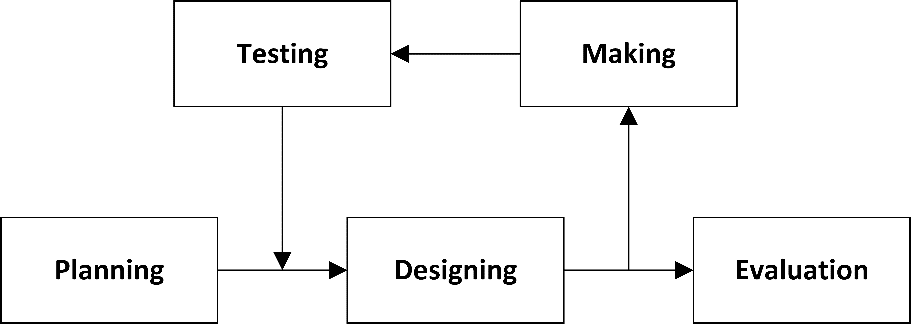
Figure 1. Agile method
- Planning
The planning phase of development begins with exploring user requirements. Data collection methods aim to objectively document and gather data based on real-world observations. This study focuses on research subjects at Ahmad Dahlan University in Yogyakarta. Data collection includes two activities:
- Interviews: Conducted with the Head of the Informatics Laboratory, interviews aim to gather insights into the manual attendance process. The lab personnel indicate that manual attendance checking is time-consuming, and validating attendance or assistant salaries experiences delays.
- Observations: Direct observations of the practicum attendance process highlight the laborious task of final attendance record reconciliation. Based on identified issues, new attendance features will be developed, informed by practical experiences as a Teaching Assistant.
- Design
- Use Case
The design phase begins with analysing the existing system and identifying use cases, as depicted in Figure 2. The old application system comprises two actors: lab personnel and students (practicum participants). In the old system, lab personnel manage the practicum periods, organize practical course schedules, and activate practicum registration. Upon activation, students select available courses, await lab confirmation, and then select practical course schedules, accessing course materials accordingly. A new use case, shown in Figure 3, adds five actors: lab personnel, instructors, assistant coordinators, assistants, and students (practicum participants). Additional features for instructors allow them to independently mark attendance according to the respective practical course schedules and monitor attendance summaries of registered students. Assistant coordinator and assistant roles are similar, with the former having additional responsibilities in coordinating specific course aspects and marking attendance independently according to the chosen practical course schedule.

Figure 2. Use case of the current Reglab system
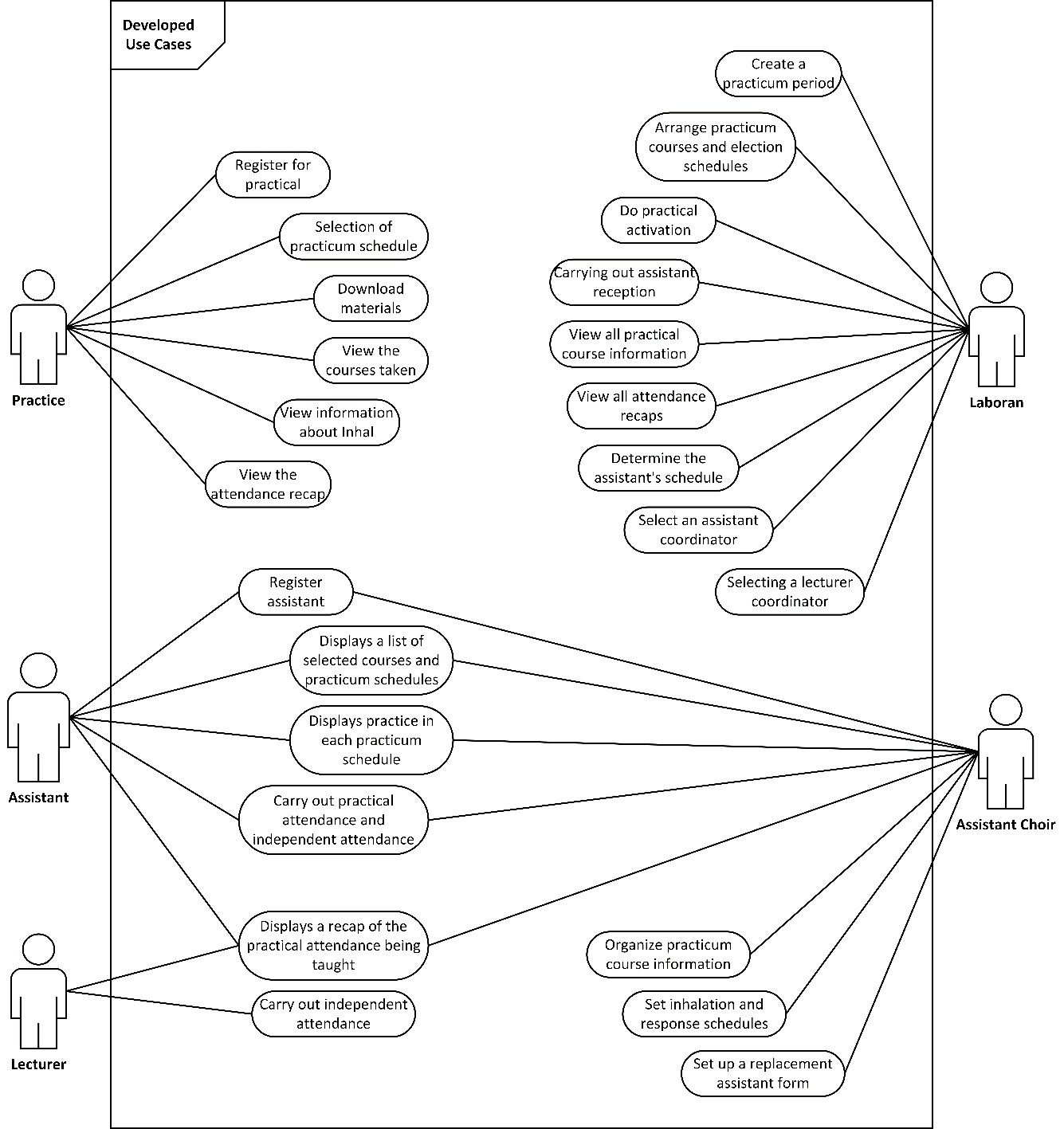
Figure 3. Use case of the developed Reglab system
- Interface Design
Creating UI/UX designs is crucial to avoid application development errors [20]. The UI/UX design maintains the previous system's theme while adding new pages for the new features as per the use case design.
- Database
The database schema, shown in Figure 4, stores data on student, assistant, and instructor attendance, with instructors' attendance data stored in a separate table similar to the PresensiJadwalPrak table. When a browser requests user location, confirmation is required. If confirmed, the location data is stored in the database. The status field in the PresensiJadwalPrak table indicates whether the user has allowed the system to access their location. True status signifies permission granted, while false status indicates either denied permission or the user being out of range.
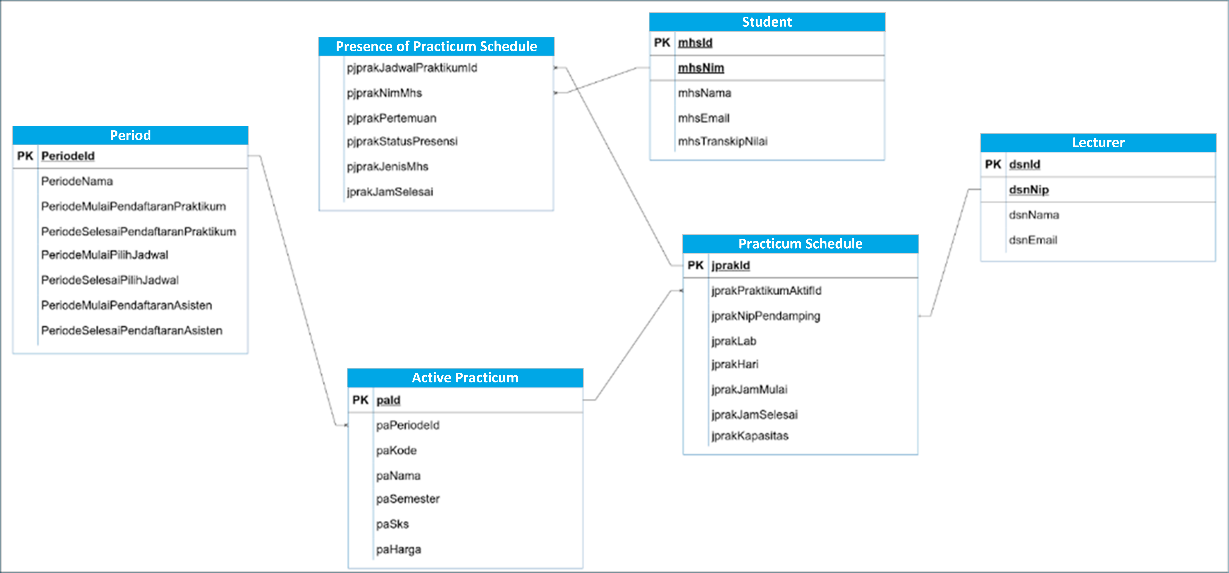
Figure 4. Database schema for Reglab attendance feature
- Development
The development phase involves implementing the interface design using Figma for its popularity, collaborative real-time features, and free access [21]. The previous application system utilized the Laravel PHP framework and MySQL for data storage.
- GPS Technology
Global Position System (GPS) is a navigation system that can provide information from a device that is connected to it from satellites. The connected device is called a GPS receiver. The information obtained includes the position of latitude and longitude. This latitude and longitude information can tell the position of an object from the satellite [22]. The GPS architecture consists of many satellites orbiting the earth and many receivers spread across the earth. Satellites and devices will always be integrated in real time every time without stopping using navigation radio system signals based on the number of satellites and sufficient time. Successful integration is characterized by the device receiving position, speed and time information from the connected satellites. GPS provides accurate information on the position of objects on earth in the form of three-dimensional x, y, z coordinates. The Google Maps platform reads the three-dimensional coordinates from the GPS system by converting them into the corresponding longitude and latitude coordinates on the earth's surface. Users will easily read and understand the coordinates on the earth with Google Maps services that describe the user's current position. Figure 5 shows how the device obtains the position of longitude and latitude coordinates [23],[24].
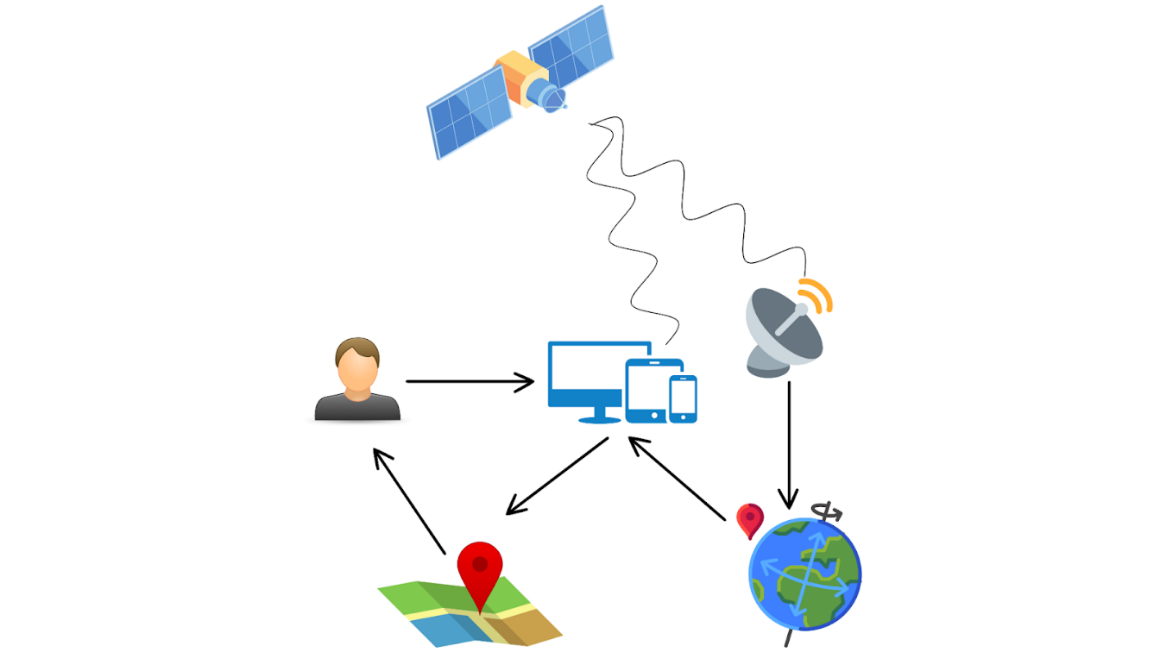
Figure 5. GPS technology architecture
- Testing
Black box testing is employed to observe execution results based on input data and verify application functionality [25]. This approach can detect various issues such as incorrect or missing functionality, database errors, data structure errors, data access errors, interface errors, user errors, performance errors, initialization, and termination errors [26].
- Evaluation
The evaluation phase utilizes feedback from practicum participants and assistants regarding system challenges in the laboratory. This evaluation assesses the system's success in meeting user needs and facilitating user activities.
- RESULT AND DISCUSSION
- User Location Retrieval System
The architecture of the developed application version utilizing GPS is depicted in Figure 6. It begins with lab assistants or accompanying instructors of each practicum schedule opening the Reglab application from a browser. The detailed practicum page of the Reglab application prompts the user for their current location, triggering a browser notification to confirm that Reglab is permitted to access the location. Radius checking occurs upon successfully obtaining the user's location, and a notification of failure appears if it is beyond the designated range. The attendance data and status are then added to the attendance database when the user is within the specified radius, followed by a notification from Reglab confirming successful attendance to the user.
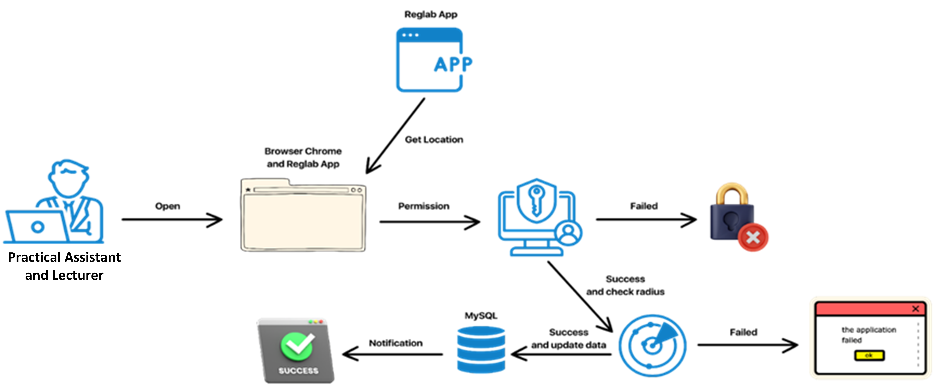
Figure 6. Reglab application architecture in implementing GPS technology
- GPS Coordinates
The user's coordinates when accessing the application are affected by factors such as obstruction by buildings, weather conditions, and other variables that can reduce GPS accuracy. The application utilizes the geolocation navigator from JavaScript programming, which, when the getCurrentLocation function is invoked, returns several data points, including accuracy, latitude, longitude, speed, and timestamp. Accuracy significantly influences the accuracy of the user's coordinate point, indicating its reliability. An accuracy value below 15 suggests 95% accuracy, while a value exceeding 100 indicates inaccurate coordinates. Accuracy testing of users is illustrated in Figure 7 The get current location JavaScript function is continuously repeated using setInterval until the accuracy reaches a low value. This repetitive location retrieval process indirectly helps prevent Fake GPS usage, as Fake GPS would consistently display high accuracy values, indicating inaccurate coordinates.

Figure 7. Real-time user coordinates with high accuracy
- Device Permissions
PC and mobile devices are already integrated with real-time GPS technology, enabling the device's coordinates to be stored and displayed on the screen upon user location access permission.
- Distance Calculation
The distance calculation between the laboratory point and the user utilizes the Haversine formula, as it boasts a 90% accuracy rate, aligning with research findings [29],[30]. The longitude and latitude coordinates of the laboratory are predefined in the application, sourced from the Google Maps platform and directed precisely to the informatics laboratory building.
- System Testing
Blackbox testing is conducted to assess whether each feature in the system functions as expected. The application testing comprises various features detailed in Table 1. With 21 features to test, the system's testing success rate can be measured at 100% (21/21) * 100.
Table 1. List of Blackbox Testing Scenarios
Role | Feature | Outcome |
Teaching Assistant
| Registering assistants | Successful |
Displaying a list of selected courses and practice schedules | Successful |
Displaying a list of enrolled students in each practice schedule | Successful |
Conducting student attendance and self-attendance | Successful |
Displaying a summary of supervised student attendance | Successful |
Lecturer
| Displaying a summary of supervised student attendance | Successful |
Conducting self-attendance | Successful |
Assistant Coordinator
| Registering assistants | Successful |
Displaying a list of selected courses and practice schedules | Successful |
Displaying a list of enrolled students in each practice schedule | Successful |
Conducting student attendance and self-attendance | Successful |
Displaying a summary of supervised student attendance | Successful |
Managing course information for practice | Successful |
Managing makeup and response schedules | Successful |
Managing substitute forms | Successful |
Student (Practitioner)
| Viewing makeup information according to enrolled courses | Successful |
Viewing attendance summary according to selected practice schedules | Successful |
Lab Staff | Viewing all attendance summaries from all courses and practice schedules | Successful |
Being able to change assistant practice schedules | Successful |
Being able to select assistant coordinators for each course | Successful |
Being able to select lecturer coordinators for each course | Successful |
- CONCLUSIONS
This research has successfully developed a attendance system to serve as a solution for the student attendance and assistant presence recording, which previously was manually conducted and has now been digitized through a system equipped with GPS as a validation for assistant attendance data. The developed system still utilizes the same technology as before, employing the Laravel framework from the PHP programming language and storing data using MySQL. System testing was conducted to verify the software's functional specifications using the Blackbox approach. The test results indicate that the system functions well, achieving a success rate of 100% in defining all features that operate effectively. The success of the Blackbox testing is reinforced by the Reglab application, the result of the developed attendance feature, which is already released and operational on the campus domain.
REFERENCES
- R. V. Imbar, B. Renaldy Sutedja and M. Christianti, "Smart Attendance Recording System using RFID and e-Certificate using QR Code-based Digital Signature," 2021 International Conference on ICT for Smart Society (ICISS), pp. 1-5, 2021, https://doi.org/10.1109/ICISS53185.2021.9533199.
- T. W. Chiang et al., “Development and evaluation of an attendance tracking system using smartphones with GPS and NFC,” Applied Artificial Intelligence, vol. 36, no. 1, p. 2083796, 2022, https://doi.org/10.1080/08839514.2022.2083796.
- R. Wijaya, S. Kristianto, Y. B. Hasibuan, and I. Alexander, “Contactless Student Attendance System Using BLE Technology, QR-Code, and Android,” In Conference on Innovative Technologies in Intelligent Systems and Industrial Applications, pp. 527-537, 2022, https://doi.org/10.1007/978-3-031-29078-7_46.
- M. S. Grewal, A. P. Andrews, and C. G. Bartone. Global navigation satellite systems, inertial navigation, and integration. John Wiley & Sons. 2020. https://books.google.co.id/books?hl=id&lr=&id=ppjDDwAAQBAJ.
- C. W. Chen and Y. H. Chen, “Prototype Development of an Interpretative Game with Location-Based AR for Ecomuseum,” In International Conference on Human-Computer Interaction, pp. 360-370, 2022, https://doi.org/10.1007/978-3-031-05654-3_25.
- S. Dev and T. Patnaik, "Student Attendance System using Face Recognition," 2020 International Conference on Smart Electronics and Communication (ICOSEC), pp. 90-96, 2020, https://doi.org/10.1109/ICOSEC49089.2020.9215441.
- R. W. T. Hartono, M. Rahayu and P. N. Taufik, "e-Control: Electronic Attendance Control System for Multi-Condition Class using Microservices Architecture Development Methods," 2021 4th International Conference of Computer and Informatics Engineering (IC2IE), pp. 299-304, 2021, https://doi.org/10.1109/IC2IE53219.2021.9649389.
- N. Yadav, D. S. Rajpoot and S. K. Dhakad, "LARAVEL: A PHP Framework for E-Commerce Website," 2019 Fifth International Conference on Image Information Processing (ICIIP), pp. 503-508, 2-19, https://doi.org/10.1109/ICIIP47207.2019.8985771.
- A. Khadhir, B. Anil Kumar, and L. D. Vanajakshi, “Analysis of global positioning system based bus travel time data and its use for advanced public transportation system applications,” Journal of Intelligent Transportation Systems, vol. 25, no. 1, pp. 58-76, 2021, https://doi.org/10.1080/15472450.2020.1754818.
- A. Hidayat, S. Terabe, and H. Yaginuma, “Estimating bus passenger volume based on a Wi-Fi scanner survey,” Transportation Research Interdisciplinary Perspectives, vol. 6, p. 100142, 2020, https://doi.org/10.1016/j.trip.2020.100142.
- A. S. Shahab and R. Sarno, "Android Application for Presence Recognition based on Face and Geofencing," 2020 International Seminar on Application for Technology of Information and Communication (iSemantic), pp. 208-213, 2020, https://doi.org/10.1109/iSemantic50169.2020.9234253.
- D. Sunaryono, J. Siswantoro, and R. Anggoro, “An android based course attendance system using face recognition,” Journal of King Saud University-Computer and Information Sciences, vol. 33, no. 3, pp. 304-312, 2021, https://doi.org/10.1016/j.jksuci.2019.01.006.
- S. Opiyo, C. Okinda, J. Zhou, E. Mwangi, and N. Makange, “Medial axis-based machine-vision system for orchard robot navigation,” Computers and Electronics in Agriculture, vol. 185, p. 106153, 2021, https://doi.org/10.1016/j.compag.2021.106153.
- V. D. Nguyen, H. V. Khoa, T. N. Kieu, and E. N. Huh, “Internet of Things-Based Intelligent Attendance System: Framework, Practice Implementation, and Application,” Electronics, vol. 11, no. 19, p. 3151, 2022, https://doi.org/10.3390/electronics11193151.
- M. Qureshi, “The proposed implementation of RFID based attendance system,” International Journal of Software Engineering & Applications (IJSEA), vol. 11, no. 3, 2020, https://doi.org/10.5121/ijsea.2020.11304.
- N. Hermanto, Nurfaizah, W. M. Baihaqi and Sarmini, "Implementation of QR Code and Imei on Android and Web-Based Student Presence Systems," 2018 3rd International Conference on Information Technology, Information System and Electrical Engineering (ICITISEE), pp. 276-280, 2018, https://doi.org/10.1109/ICITISEE.2018.8721009.
- C. Fagarasan, O. Popa, A. Pisla, and C. Cristea, “Agile, waterfall and iterative approach in information technology projects,” In IOP Conference Series: Materials Science and Engineering, vol. 1169, no. 1, p. 012025, 2021, https://doi.org/10.1088/1757-899X/1169/1/012025.
- A. Rahmatulloh, F. M. S. Nursuwars, I. Darmawan and G. Febrizki, "Applied Internet of Things (IoT): The Prototype Bus Passenger Monitoring System Using PIR Sensor," 2020 8th International Conference on Information and Communication Technology (ICoICT), pp. 1-6, 2020, https://doi.org/10.1109/ICoICT49345.2020.9166420.
- A. K. Sangaiah, D. V. Medhane, T. Han, M. S. Hossain and G. Muhammad, "Enforcing Position-Based Confidentiality With Machine Learning Paradigm Through Mobile Edge Computing in Real-Time Industrial Informatics," in IEEE Transactions on Industrial Informatics, vol. 15, no. 7, pp. 4189-4196, July 2019, https://doi.org/10.1109/TII.2019.2898174.
- Y. Yudhanto, W. M. Pryhatyanto and W. Sulandari, "Designing and Making UI/UX Designs on The Official Website with The Design Thinking Method," 2022 1st International Conference on Smart Technology, Applied Informatics, and Engineering (APICS), pp. 165-170, 2022, https://doi.org/10.1109/APICS56469.2022.9918684.
- Hamid, A., & Erliyani, I. (2021, February). Effectiveness of Website-Based Smart Seminar Application on Islamic Learning (Case Study at Raharja University). In Journal of Physics: Conference Series (Vol. 1764, No. 1, p. 012115, 2023, https://doi.org/10.1088/1742-6596/1764/1/012115.
- A. Rahman, O. Farrok, and M. M. Haque, “Environmental impact of renewable energy source based electrical power plants: Solar, wind, hydroelectric, biomass, geothermal, tidal, ocean, and osmotic,” Renewable and Sustainable Energy Reviews, vol. 161, p. 112279, 2022, https://doi.org/10.1016/j.rser.2022.112279.
- N. Giuffrida, M. Le Pira, G. Inturri, and M. Ignaccolo, “Mapping with stakeholders: An overview of public participatory GIS and VGI in transport decision-making,” ISPRS International Journal of Geo-Information, vol. 8, no. 4, p. 198, 2019, https://doi.org/10.3390/ijgi8040198.
- B. Merz et al., “Impact forecasting to support emergency management of natural hazards,” Reviews of Geophysics, vol. 58, no. 4, p. e2020RG000704, 2020, https://doi.org/10.1029/2020RG000704.
- D. Widhyaestoeti et al., “Black box testing equivalence partitions for front-end testing on academic systems sitoda,” Jurnal Ilmiah Teknologi Infomasi Terapan, vol. 7, no. 3, pp. 211-216, 2021, https://doi.org/10.33197/jitter.vol7.iss3.2021.626.
- F. N. Khasanah, R. Trias Handayanto, H. Herlawati, D. Thamrin, P. Prasojo and E. S. H. Hutahaean, "Decision Support System For Student Scholarship Recipients Using Simple Additive Weighting Method with Sensitivity Analysis," 2020 Fifth International Conference on Informatics and Computing (ICIC), pp. 1-6, 2020, https://doi.org/10.1109/ICIC50835.2020.9288617.
- M. A. Kushendriawan, H. B. Santoso, P. O. H. Putra, and M. Schrepp, “Evaluating User Experience of a Mobile Health Application ‘Halodoc’using User Experience Questionnaire and Usability Testing,” Jurnal sistem informasi, vol. 17, no. 1, pp. 58-71, 2021, https://doi.org/10.21609/jsi.v17i1.1063.
- L. Szabó, L. Lindenmaier and V. Tihanyi, "Smartphone Based HD Map Building for Autonomous Vehicles," 2019 IEEE 17th World Symposium on Applied Machine Intelligence and Informatics (SAMI), pp. 365-370, 2019, https://doi.org/10.1109/SAMI.2019.8782784.
- T. Perger and H. Auer, “Energy efficient route planning for electric vehicles with special consideration of the topography and battery lifetime,” Energy Efficiency, vol. 13, no. 8, pp. 1705-1726, 2020, https://doi.org/10.1007/s12053-020-09900-5.
- M. Anjum, M. A. Khan, S. A. Hassan, H. Jung, and K. Dev, “Analysis of time-weighted LoRa-based positioning using machine learning,” Computer Communications, vol. 193, pp. 266-278, 2022, https://doi.org/10.1016/j.comcom.2022.07.010.
AUTHOR BIOGRAPHY
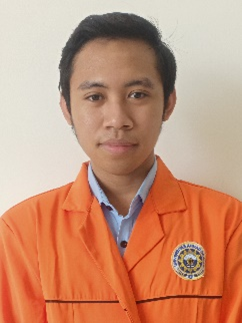
| Anang Nur Prasetya is a student from Department of Informatic, Faculty of Industrial Technology, Universitas Ahmad Dahlan, Yogyakarta, Indonesia. Email: anangnr.pras@gmail.com |
|
|

| Supriyanto is a Lecturer at Department of Informatic, Faculty of Industrial Technology, Universitas Ahmad Dahlan, Yogyakarta, Indonesia, undergraduate program since 2016, I have been researching in the fields of Interaction Design, Gamification, Web & Mobile Technology, and Game Technology. Email: supriyanto@tif.uad.ac.id
|
Implementation of GPS as a Validation System for Computer Laboratory Practicum Attendance
(Anang Nur Prasetya)